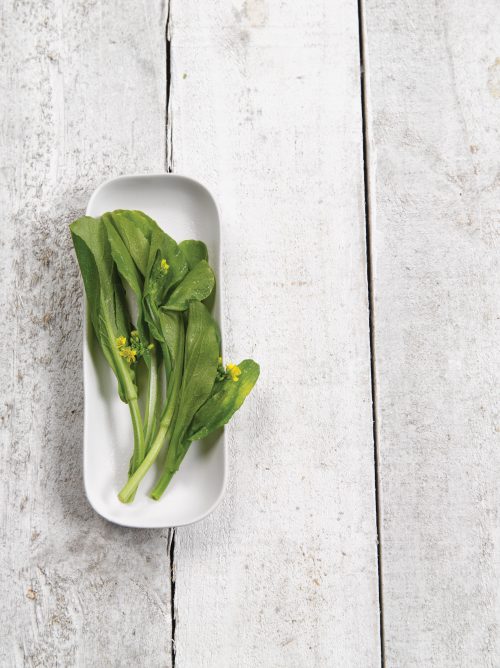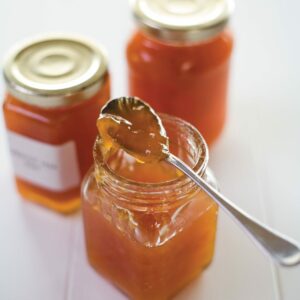
Ever wondered about some of the more exotic produce in the supermarket? Sarah Swain takes a look at how to get the best out of tasty Asian veggies.
Pak choy
This is sometimes called Chinese cabbage, bok choy or pak choi. Pak choy has white crunchy stems and dark green leaves, which are both edible. It has a slightly mustard flavour which is between mild cabbage and spinach, so it will work in any dish where these are normally used.
To prepare
Cut the leaves from the stems. Cook the stems in boiling water until tender. At the end of cooking when the stalks are starting to wilt, add the leaves. If you want to cook the leaves and stems at the same time for a stir-fry type dish, cut the leaves into wide strips and the stems into finer strips. Very young pak choy can be left whole, halved or quartered.
To use
- Add pak choy to stir- fries, soups, curries, filo pie fillings and rolls.
- Very young pak choy can be eaten raw in salads.
- Top lightly-blanched pak choy with a simple dressing: 2 tablespoons salt-reduced soy sauce to 1 tablespoon groundnut oil, juice of 1 lime and 1 teaspoon each of root ginger and crushed garlic.
Choy sum
This is a flowering Chinese cabbage. It is slimmer than pak choy and it has smooth green leaves and pale green stems with pale yellow flowers on the tips of the inner shoots. It has a light, sweet mustard flavour.
To prepare
Prepare choy sum as you would broccoli. It is suitable for quick cooking methods as the leaves and flowers cook quickly. Use all parts of the stem including the flowers. It is best to eat choy sum when the flowers are in bud rather than in full bloom.
To use
- Serve lightly-cooked choy sum in a warm salad with lightly-cooked snow peas, cherry tomatoes and sliced spring onion. Toss in a dressing of light soy sauce and groundnut oil.
- Add lightly-steamed, chopped choy sum to an omelette or baked egg dish instead of spinach.
- Stir chopped, uncooked choy sum into a vegetable or prawn risotto dish for the final few minutes of cooking.
- Stir chopped, uncooked choy sum into a potato and tomato curry for the final five minutes of cooking.
Gai laan
Also known as Chinese broccoli or Chinese kale, gai laan has glossy, long, crisp green stems, blue-green leaves and white flowers. It has a strong broccoli flavour. Choose plants with flowers in bud rather than in full bloom.
To prepare
Chop leaves roughly. Peel the stem to get rid of the fibrous layer and cut into even-sized pieces. Stir-frying or steaming are the most commonly used methods of cooking.
To use
Use anywhere you would usually use broccoli.
- Add lightly-cooked, even-sized pieces of gai laan to cooked pasta tossed in olive oil and pine nuts. Add some diced lean cooked chicken and top with Parmesan cheese.
- Place even-sized pieces of gai laan in foil or greaseproof paper parcels with chopped root ginger and crushed garlic alongside salmon steaks. Steam until tender.
- Add even-sized chopped gai laan to a sweet and sour pork stir- fry in the final 2 minutes of cooking.
- Add chopped uncooked gai laan to stir-fried prawns with garlic and mushrooms. Serve with steamed rice.
- Add lightly cooked gai laan to a warm potato salad with some lean, diced bacon and chargrilled vegetables.
More Asian greens
Kai choy
This is also called mustard cabbage or gai choy. The leaves are used in stir-fries, pickles and soups. Kai choy is usually cooked in chicken stock and served as a broth but it’s delicious in any Asian-style soup.
Lemon basil
This has small green leaves with a lemony scent and peppery flavour. It’s good sprinkled over salads and Asian-style soups.
Thai basil
This has slightly serrated green leaves on purple stems rather than the traditional rounded green leaves of Italian basil. It has a sweet anise flavour and can be used in stir-fries, red and green curries, salads and soups.
Fuzzy melons
Also called hairy melon, these are shaped like a marrow or overgrown eggplant. To eat, peel the skin, remove the seeds and eat the flesh. This tastes like cucumber but has a marrow texture. Stuff them like a marrow, cut in slices and stir-fry, or added to soups.
Nutrition
Asian salad greens are now readily available from supermarkets and can add variety to the vegetables you enjoy in your everyday cooking. They are highly nutritious with most containing useful amounts of vitamin C, vitamin A and fibre. Asian greens are a good source of phytochemicals, including flavonoids and carotenoids, and those in the brassica family also contain beneficial sulphur compounds. The darker the colour, the higher the antioxidant levels.
www.healthyfood.com










